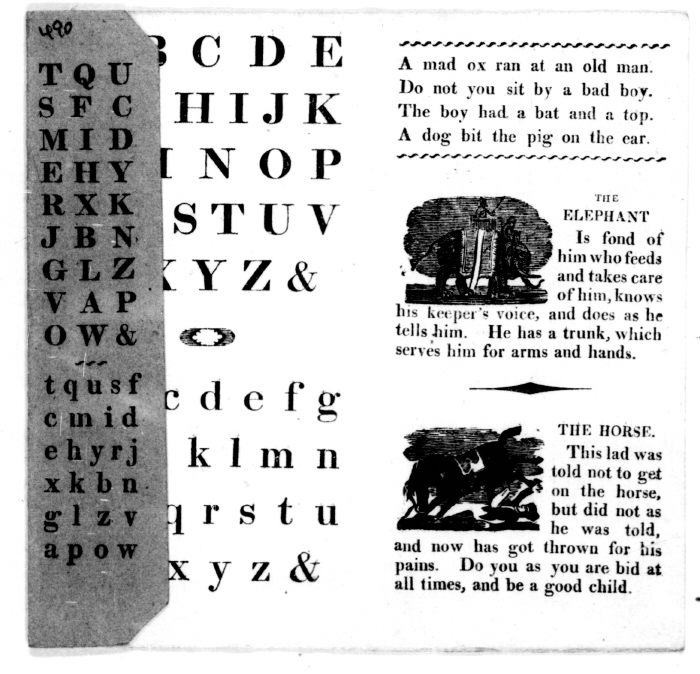Books of Instruction. 0490: Anon., [A Battledore] 'The Fallow Deer'
| Author: |
Anon. |
| Title: |
[A Battledore] 'The Fallow Deer' |
| Cat. Number: |
0490 |
| Date: |
No date but c.1830? |
| 1st Edition: |
|
| Pub. Place: |
|
| Publisher: |
|
| Price: |
|
| Pages: |
1 sheet, folded three times |
| Size: |
14 x 7 cm |
| Illustrations: |
4 wood-cuts |
| Note: |
|
Images of all pages of this book

Introductory essay
Whereas in the seventeenth and early eighteenth centuries, battledores had generally taken the form of small wooden bats, like those used now for table-tennis, with the alphabet printed on one side, by the nineteenth, they were almost always produced in the form we see here: a piece of card folded into two, printed on both sides, and with a flap attached to the leading edge. Benjamin Collins, a Salisbury bookseller active in the mid-eighteenth century claimed responsibility for inventing this format, but this is rather doubtful (Carpenter 1984: 49-50). The main purpose of such battledores was still to teach children the alphabet, but, as here, short stories, small cuts, and other instructional or entertaining material generally accompanied the ABC.
Compare 0489 for a battledore sharing most, but not all, of the material to be found here. It may have been published by J. G. Rusher of Banbury since some of its woodcuts turn up in other Rusher publications. If this is so, then 'The Fallow Deer' must surely also have been a Rusher publication.
Carpenter, Humphrey & Pritchard, Mari, The Oxford Companion to Children's Literature, Oxford: OUP, 1984



